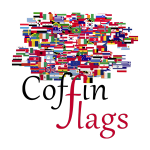Description
 Switzerland, officially the Swiss Confederation, is a country situated in the confluence of western, central, and southern Europe. It is a federal republic composed of 26 cantons. No city in Switzerland has the official status either of capital or of Federal City, nevertheless, Berne is commonly referred to as “Federal City”. Switzerland is a landlocked country bordered by Italy to the south, France to the west, Germany to the north, and Austria and Liechtenstein to the east. It is geographically divided between the Alps, the Swiss Plateau and the Jura, spanning a total area of 41,285 km2 (15,940 sq mi), and a land area of 39,997 km2 (15,443 sq mi). While the Alps occupy the greater part of the territory, the Swiss population of approximately 8.5 million is concentrated mostly on the plateau, where the largest cities are located, among them the two global cities and economic centres of Zürich and Geneva.
Switzerland, officially the Swiss Confederation, is a country situated in the confluence of western, central, and southern Europe. It is a federal republic composed of 26 cantons. No city in Switzerland has the official status either of capital or of Federal City, nevertheless, Berne is commonly referred to as “Federal City”. Switzerland is a landlocked country bordered by Italy to the south, France to the west, Germany to the north, and Austria and Liechtenstein to the east. It is geographically divided between the Alps, the Swiss Plateau and the Jura, spanning a total area of 41,285 km2 (15,940 sq mi), and a land area of 39,997 km2 (15,443 sq mi). While the Alps occupy the greater part of the territory, the Swiss population of approximately 8.5 million is concentrated mostly on the plateau, where the largest cities are located, among them the two global cities and economic centres of Zürich and Geneva.
The flag of Switzerland displays a white cross in the centre of a square red field. The white cross is known as the Swiss cross. The white cross has been used as the field sign (attached to the clothing of combatants and to the cantonal war flags in the form of strips of linen) of the Old Swiss Confederacy since its formation in the late 13th or early 14th century. Its symbolism was described by the Swiss Federal Council in 1889 as representing “at the same the Christian cross symbol and the field sign of the Old Confederacy”. As a national ensign, it was first used in 1800 during the Hundred Days by General Niklaus Franz von Bachmann, and as regimental flag of all cantonal troops from 1841. The federal coat of arms (eidgenössisches Wappen) was defined in 1815 for the Restored Confederacy as the white-on-red Swiss cross in a heraldic shield. The current design was used together with a cross composed of five squares until 1889 when its dimensions were officially set.








Reviews
There are no reviews yet.